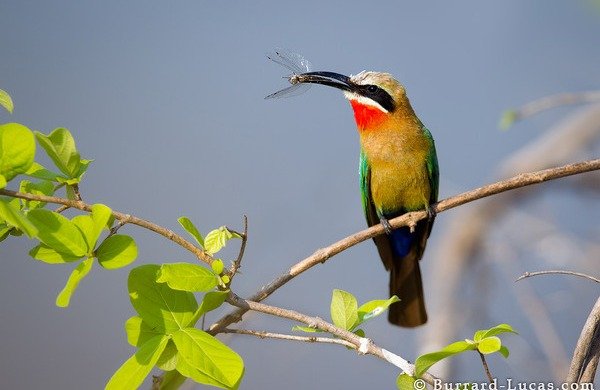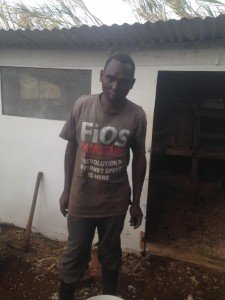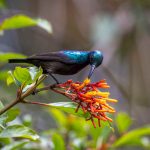
This is the reason I’m birding in Tanzania with no field guide.
The last time I visited my friend India, who lives in the hills above Karatu, I brought my own field guide and filled a notebook with bird names, descriptions, and sketches. But that was seven years ago.
India founded and, along with Managing Director Peter Leon Mmassey, runs the Tanzanian Children’s Fund. Their Rift Valley Children’s Village is currently home to 90 kids, a large staff, and and a revolving cast of volunteers; TCF sponsors kids from other villages to attend secondary schools, and runs outreach, infrastructure-building, and micro-finance programs as well. The last time I was here, one of the kids parked himself on my lap and regarded my copy of “Birds of East Africa.”
“You like birds,” he said, giving me a winning smile. “Should I show you the ones I have eaten?”
As it turned out Nikomo had been all but abandoned when he was five, and was so constantly hungry that everything became a potential food source. Four years later, happy, well-fed, and carefully instructed that wildlife was no longer on the menu, he was the Village’s walking field guide to birds. He was just trying to be helpful, but I was unprepared.
“What?” I gasped.
“I don’t do it anymore!” he cried, returning my look of alarm.
Such was the beginning of our alliance. Nikomo would take me on hikes, his laser eyes finding birds I would never have spotted, telling me their names both in both Swahili and English; when his English failed him, he’d open my book and point. Once an Augur Buzzard swooped over our heads and landed in a tree right above us.
“Suzie is very happy now, yes?” he grinned, speaking with his irresistibly precise, clipped accent.
But that was seven years ago. It’s not as if I don’t know that children grow up, and books disappear; but after listening to dire warnings of the penalties for overweight luggage I left my field guide behind, only to arrive and discover that India’s was gone and Nikomo was in high school, three hours away.
So: I wander around with my binoculars, either committing fabulous avians to memory or taking fuzzy, long-distance photos with my Iphone; then I return to the Village, where I scroll through Tanzanian Birds sites until the internet goes down, which almost always occurs prior to identifying the birds. Birding apps? Don’t even get me started on buying a SIM card in Arusha.
I tell myself that I’m not here to go birding, anyway, I’m here to write a book about the Children’s Village. Plus I’m more of a bird rehabilitator than a birder, which is where the mongooses come in.
“Mama, we have lost four more chickens,” said one of the kids, as India and I returned from a weekend at the incredible Plantation Lodge.
“What do you mean, ‘four more’?” I demanded. “Since when are you losing chickens?”
The following day India appointed Pascal my aide-de-camp, and the two of us predator-proofed the chicken house. Pascal is a sturdy, hard-working Tanzanian man who had the bad luck to be on duty when I handed India my list of supplies; he watched in polite disbelief as I ducked into the chicken house, beckoned him to follow, and outlined my plan to remove the shavings, dig through and remove the top eight inches of soil, lay down an oversized floor of mongoose-proof hardware cloth, curl it up and attach it to the walls, then replace the soil and shavings.
Pascal’s English (“small hoe” “hammer” “garden wire” and “container store”) was better than my Swahili (“Hello!” “Welcome!” “How are you?” and “Goodbye!”). However I was better at charades and at miming the expressions of terrorized chickens, so despite the language barrier, we made quite an effective team. We also provided five and a half hours of entertainment for the elegant, kanga-clad mamas who were hand-washing clothes on the lawn, and who, evidently, were not used to seeing a sweaty, filthy American woman crawling around a chicken house wielding a staple gun.
“You working today?” questioned dozens of kids returning from school, as Pascal and I, mission accomplished, trudged by carrying pickaxes, shovels, and miscellaneous equipment; proving, at least to me, that when I sit in the office for five and half hours, dressed in clean clothing and hunched over my computer, it doesn’t really count as work.
Nikomo has come home for Easter vacation. He has grown into a handsome young man with a winning smile, though he hasn’t stayed still long enough for me to photograph him. In our future are Kilombero Weavers, Paradise Flycatchers, and White-Fronted Bee Eaters, as well a small, safe group of little white chickens.
Banner photo by Burrard-Lucas Photography; first, second, and fourth photos by Suzie Gilbert; third photo by Jean Carlo Nascimento.

















Very cool post!
Thanks, Patrick!